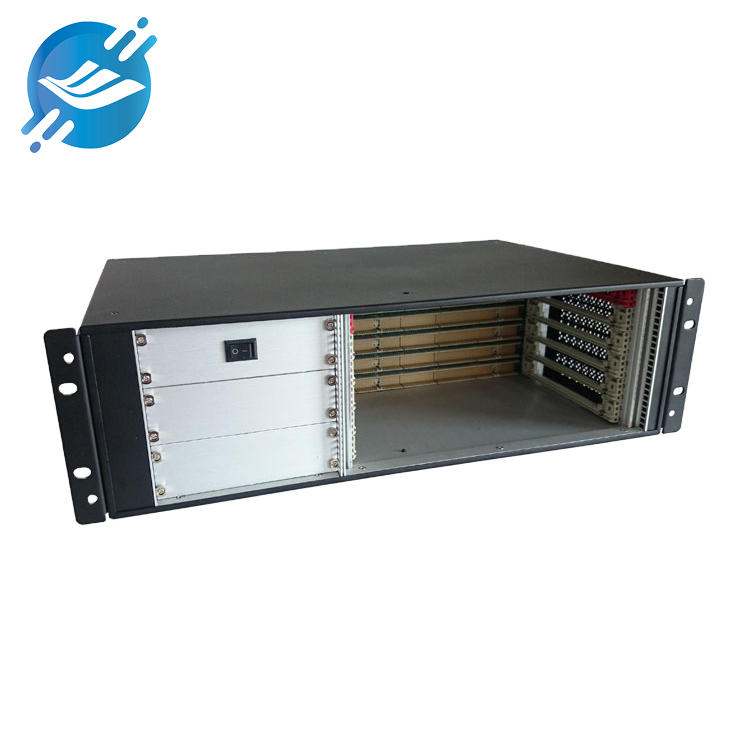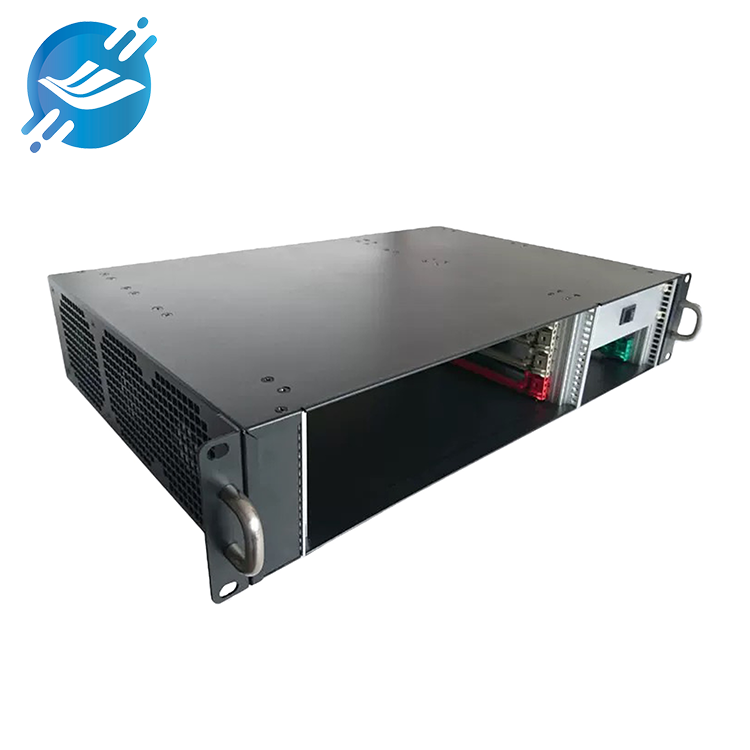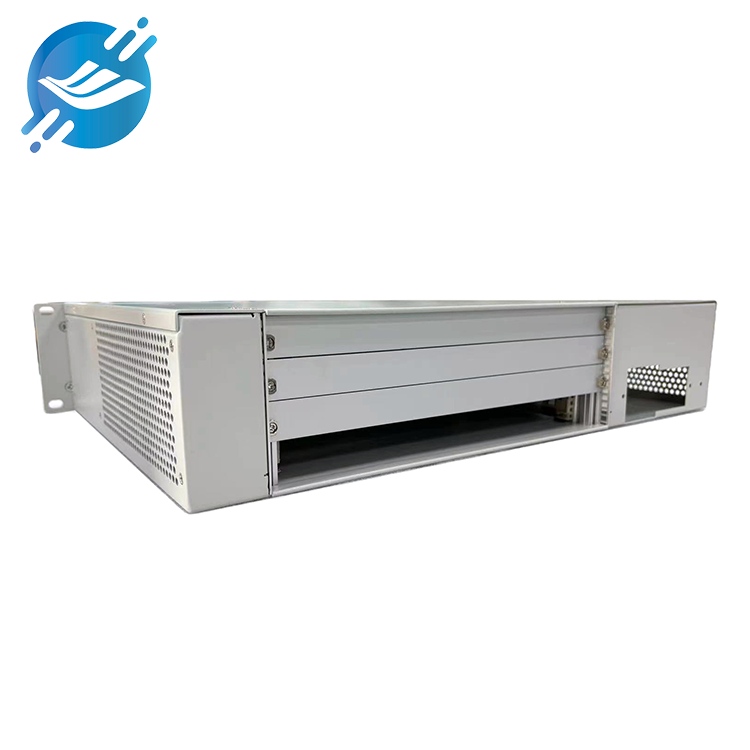Rack Mount Server Enclosures: The Cornerstone of Organized and Reliable IT Infrastructure
Rack mount server enclosures are the unacknowledged heroes of the world of IT infrastructure, where servers, switches, and storage devices work constantly to power enterprises. These specially designed modules organize equipment, safeguard priceless hardware, improve performance, and expand to meet your demands. They are much more than just metal cabinets. They are essential to the seamless operation of IT systems, whether they are in a large data center, a modest office server closet, or a remote edge computing location. What they are, their essential characteristics, typical varieties, how to choose the best one, and emerging trends influencing them are all covered in this article.
What Is a Rack Mount Server Enclosure?
A rack mount server enclosure is a protective case built to keep your servers and networking gear safe and neat. It uses standard 19-inch mounting rails, so setting up servers, switches, patch panels, and other devices is a breeze, all in a clean, organized way. Unlike open racks, enclosures have doors and side panels (many lockable) that protect your equipment, plus they make cable management easier and airflow better, too.
Cooling, power distribution, and monitoring systems are even supported by many models. Rack mount server enclosures are therefore a common option in data centers, server rooms, and any setting where maintaining the security, coolness, and manageability of IT systems is crucial.
How to Choose the Right Rack Mount Server Enclosure
Selecting the right enclosure requires aligning its features with your IT needs, environment, and long-term goals. Here are key considerations:
1. Size and Capacity:
Figure out what you need now and what you’ll need later: Count how many U your gear takes up (like a 2U server or 1U switch), then add 20–30% extra for future upgrades. Don’t forget width (19 inches is standard) and depth—make sure it fits your longest equipment, plus room for cables and cooling.
2. Environmental Conditions:
For indoor spaces like data centers or regular office server rooms, standard rack-mount server enclosures are totally fine. Mesh doors are a smart pick because they let air flow well. But if you’re putting the enclosure outside or in a factory setting, you’ll need something tough that meets NEMA ratings. These rugged models hold up against rust and can handle big temperature changes, which is a must for harsh spots. And if you’re in a place with lots of electrical interference, manufacturing floors are a good example, make sure you grab one with solid EMI shielding to keep the gear from glitching.
3. Security Requirements:
If your equipment stores sensitive information, think patient health records or financial data, you’ll want enclosures with doors that lock. Digital locks are especially handy because they keep a log of who’s accessing it, which is great for audits. Solid side panels add another layer of security, and features like keycard or biometric access control are worth looking into, too. If the enclosure’s going in a public area, throw in some anti-tamper features; they’ll give you that extra bit of reassurance that nothing’s been messed with.
4. Cooling Needs:
Low-density setups (like most SMBs) can use passive cooling with no extra fans needed. But if you’ve got lots of gear or heat-heavy stuff (AI or HPC), you’ll need active cooling (fans or liquid cooling compatibility). Look for enclosures with hot/cold aisle dividers, too; they make cooling way more efficient.
5. Compliance:
Regulated industries (healthcare, finance, government) need enclosures with certifications like ISO 9001 (quality), IEC 60950 (safety), or NEMA (environmental). Make sure the manufacturer can give you docs that hold up in audits; you’ll need that proof later.
Key Capabilities That Define Leading Manufacturers
Manufacturers of rack-mount server enclosures are not all the same. The most reputable brands in the sector set themselves apart with a set of fundamental skills that guarantee excellence, adaptability, and customer service. This is what distinguishes them:
1. Customization and Modularity:
For complicated IT settings, a single one-size-fits-all enclosure is rarely sufficient because every organization has unique requirements. The best manufacturers understand this and provide good customization options, from basic adjustments to completely developed, made-to-order solutions. A factory might want a thinner enclosure to fit into a small control room, while a data center builder might request enclosures pre-installed with PDUs and cable trays to get things up and running faster.
Modularity is another big plus here, enclosures that let you add extra fans, dividers, or security features down the line without having to replace the whole cabinet. This kind of flexibility means businesses don’t end up paying for features they don’t need, and they won’t outgrow their enclosures before they’re ready to upgrade.
2. Quality Control and Material Sourcing:
There are two big factors that decide whether a rack mount server enclosure will stand the test of time: the materials it’s made of and how strict the quality control is. The top manufacturers never skip these; they grab high-quality materials, using cold-rolled steel for regular enclosures and galvanized steel or aluminum for the tough ones that need to handle harsh spots. This way, the cabinet is strong enough and built to last for years.
3. Global Logistics and Local Support:
If your business operates in different regions, teaming up with manufacturers that have a global presence is a massive plus. The top brands maintain warehouses in multiple countries, so your enclosure lands at your door in a few days, not stuck in shipping for weeks. They also tweak their products to meet local rules, like adding CE marking for Europe or CCC certification for China, so you never have to worry about compliance headaches. Once the enclosure shows up, solid post-sales support becomes just as crucial. Having local techs who can help with installation, get spare parts to you fast, or fix issues right on the spot? That changes everything. After all, a single enclosure breakdown can cost thousands an hour in downtime. That’s exactly why manufacturers offering 24/7 support or on-site service really stand out from the crowd.
4. Sustainability Initiatives:
Now that more businesses are focusing on ESG goals, manufacturers are stepping up with greener practices. This means using recycled materials; some models even use up to 80% recycled steel, designing enclosures, so they’re easy to take apart and recycle when they’re at the end of their life, and cutting down on energy used during production. Some manufacturers go further, offering carbon-neutral shipping or putting out sustainability reports that lay out their environmental impact clearly. For businesses wanting their IT setups to match their ESG targets, a manufacturer’s green credentials aren’t just a nice bonus anymore; they’re a key thing to look for.
Conclusion:
Rack mount server enclosure manufacturers are the unsung masterminds behind modern IT infrastructure. They don’t just churn out enclosures; they craft solutions that protect your critical gear, adapt to new tech trends, and fit right with what your business needs. Whether you’re running a data center and need high-density, smart enclosures, or you’re an SMB after something affordable and easy to use, the right manufacturer isn’t just a supplier; they’re a true partner.
If businesses focus on a manufacturer’s industry know-how, how well they can customize solutions, their commitment to quality, the support they offer, and their sustainability efforts, they’ll find one that delivers enclosures built to last—and grow right along with their IT setup. In a world where IT reliability can’t be compromised, the manufacturer behind your enclosure matters just as much as the enclosure itself.
Post time: Nov-26-2025









